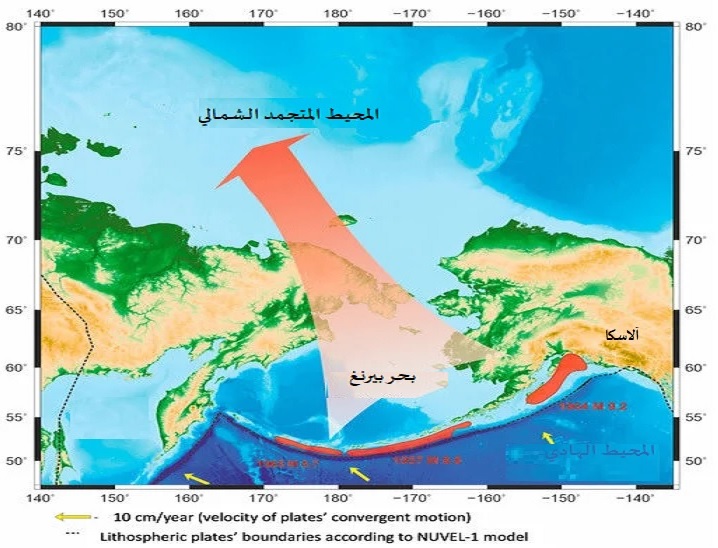A Russian geologist has provided a new explanation for the rapidly rising Arctic temperature, and indicated in a new research paper that the sudden and rapid warming may be the result of a series of strong earthquakes.
But how can earthquakes explain the warming in the Arctic?
Global warming is one of the pressing issues facing humanity today.
It is believed that it is the result of human activity that has caused, since the beginning of the industrial age, to increase the concentration of greenhouse gases in the atmosphere.
But this opinion does not explain the reason for the sudden and rapid rise in temperatures, which sometimes occurs in some areas of the world.
Earthquakes followed by sudden warming
One of the regions experiencing such an incomprehensible phenomenon is the Arctic, where the release of methane from permafrost is one of the factors driving the rise in temperature there.
Since researchers began monitoring temperatures in this region, it has witnessed two periods of sudden warming, the first occurred in the 1920s and 1930s, and the second began in 1980 and continues to the present day.
In the new study, recently published in the journal Geosciences, Leopold Lubkovsky of the Moscow Institute of Physics and Technology hypothesized that sudden changes in unexplained temperatures may be caused by geodynamic factors. The institute's reporter reports to a series of "great" earthquakes in the Aleutian Arc, the closest seismically active region to the Arctic.
To test his hypothesis, Lubkovsky searched for answers to 3 questions, the first of which was related to the coincidence of the dates of major earthquakes with spikes in temperature, and the second about the nature of the mechanism that enabled the lithosphere disturbances to spread over more than two thousand kilometers from the Aleutian Islands to the polar shelf.
The third question related to how these disturbances affect the increase in methane emissions.
Explanation of the occurrence of two periods of sudden warming in the Arctic during the twentieth century (geosciences)
Questions answers
The answer to the first question came through an analysis of historical data.
It turns out that the Aleutian Arc, located in the North Pacific Ocean off Alaska, was indeed the site of two great earthquakes in the twentieth century, each preceded by a sudden rise in temperature of about 15 to 20 years.
The answer to the second question required the use of a model for the dynamics of excitation in the lithosphere, and the simulation of the propagation of so-called tectonic waves.
The simulation results showed that these waves travel at about 100 kilometers per year.
This is consistent with the delay between each series of large earthquakes and the subsequent rise in temperature, as the disturbances took 15 to 20 years to cut the distance between the epicenter of the earthquakes and the North Pole of more than two thousand kilometers.
In answering the third question, the researcher wrote in his paper that tectonic waves that reach the polar shelf cause additional pressures in the lithosphere, which leads to the cracking of the internal structure of the stable gas hydrates and the permafrost that store methane.
This results in the release of methane gas into the shelf waters and into the atmosphere, which leads to a warming of the climate in the region due to the effect of global warming.
Tectonic propagation of earthquakes in the Aleutian arc releases methane from geosciences
According to the author of the study, there is a clear relationship between large earthquakes in the Aleutian Arc and sudden stages of global warming.
Each of the three components of this diagram is logical and provides a mathematical and physical explanation of what happened.
More importantly, it explains the sudden rise in temperatures in the Arctic, which previous models had not found.
However, there is much to be done, according to the researcher, to improve the model used in this study in order to confirm or exclude the proposed mechanism.

